All that glitters is gold: Exploring Yangon's golden pagoda
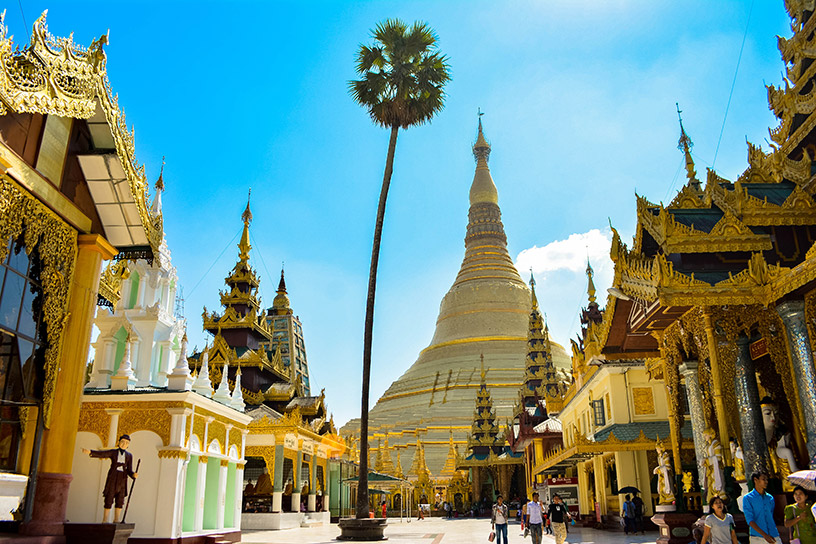
Yangon was my first introduction to Myanmar – a country that I fell in love with the moment I left the airport. As my taxi drove me to my hotel, the roads were fringed by parks, pagodas and lakes. Near my hotel stood the dazzling Schwedagon Pagoda, side by side with local housing units and near a small lake.
If you only do one thing in Yangon, it has to be a visit to the elegant and fascinating Schwedagon Pagoda – one of the world’s largest Buddhist temples and a must see on your Myanmar itinerary.
The pagoda is completely dazzling and expansive as it shimmers with golden hues, and it’s worth a visit both during the day and night.
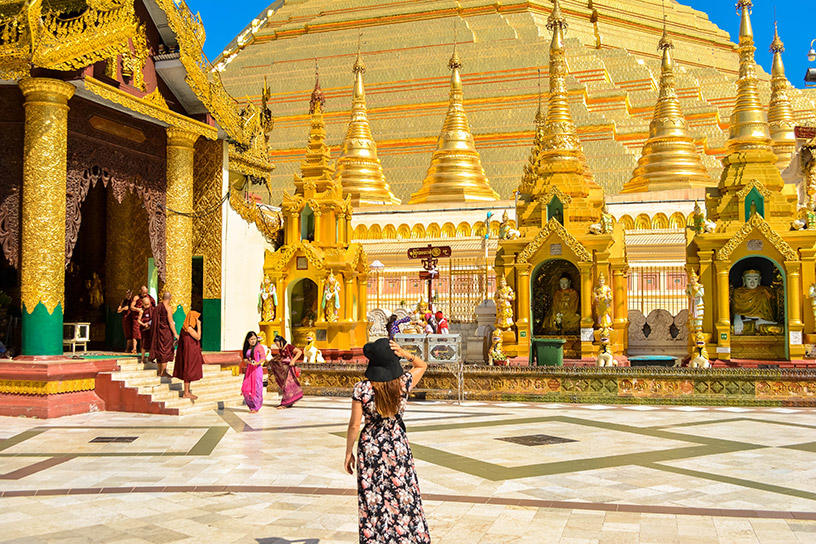
The 100 metre gold plated and diamond topped main stupa sits high on Singuttara Hill in the Schwedagon Pagoda complex and is visible from many areas of Yangon city. The complex has been expanded over the years, but a religious site has existed on this hill for more than 2,500 years.
The story goes that two brothers who lived in Yangon met the Buddha in India. The Buddha gave them eight of his hairs and told the brothers to enshrine them in Yangon in the spot where three previous reincarnations of the Buddha were buried. This spot was Singuttara Hill and the Schwedagon Pagoda was born.
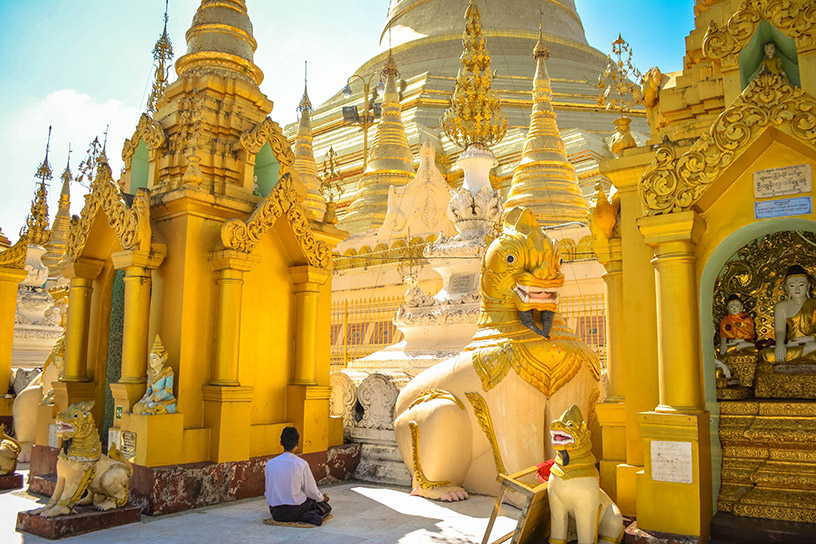
There’s four entrances into the pagoda complex guarded by huge mythological lions called Chinthes. It doesn’t matter which entrance you take so just pick one, take off your shoes, and head into the golden complex and explore the many stupas and statues.
Prepare to spend an hour or two here exploring, watching local people deep in prayer, and witnessing burgundy robed monks sedately wandering the grounds or praying.
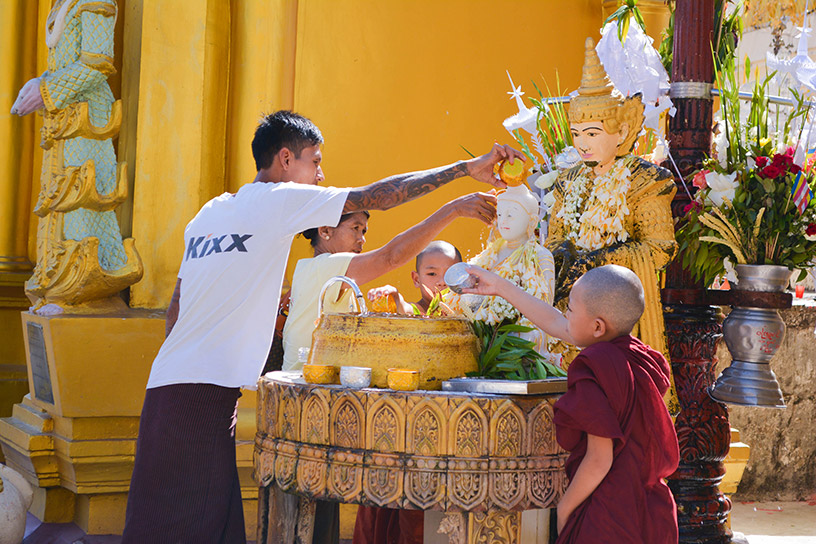
At each corner of the pagoda is a shrine with a Buddha image. There’s one for each day of the week. Devotees pray to the shrine belonging to their day of birth - burning candles or incense, offering flowers and pouring water over the Buddha’s head.
After you’ve had your golden fix, head into Yangon’s centre and check out the colonial architecture of the downtown area. The streets around the relaxing Mahabandoola Park are lined with colonial era buildings dating back to the late 19th century.

The British occupied much of what was then known as Burma in the late 1800s. Yangon became the capital and a number of buildings were built during this period in colonial style. After the capital was moved to Naypyidaw, most of the buildings were abandoned and sadly left to decay – but the buildings offer an interesting look at Myanmar’s past. Alongside Mahabandoola Park, near the red High Court colonial building, you can get a cheap meal from one of the many street food vendors.
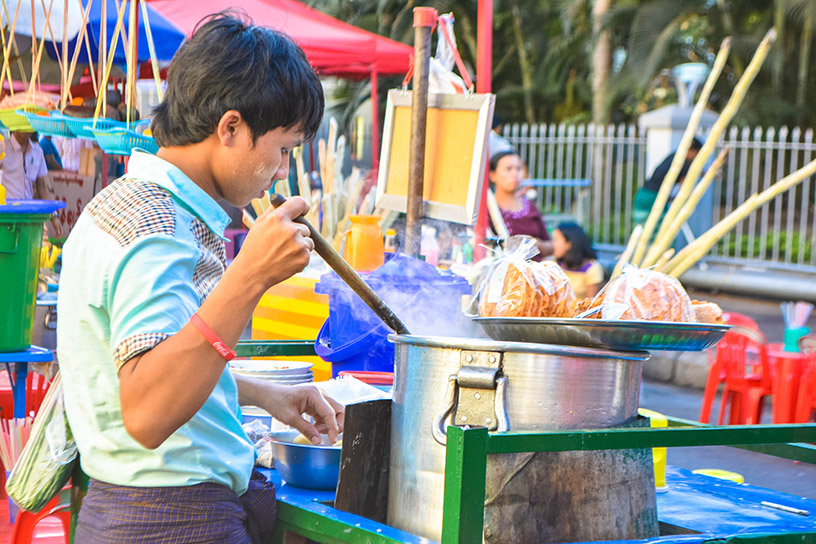
If you want to get a sample of local life, hop on the Circle Line commuter train – a three- hour, 49 kilometre journey that loops around Yangon city. Here you’ll see local people commuting through Yangon, market vendors, and locals with their fruit and vegetable haul.
Taste local food from the hawkers who board the train at every stop. Apples and corn are popular, or you can get a doughnut like treat covered in a golden syrup tasting sauce.
This is the place to people watch and see Myanmar life, hang out the door to catch a breeze and take in the surrounding fields and villages.

The best station to get on the train is at the Yangon Central train station off Pansodan Street. The train departs from Platform 6 or 7. You pay for the ticket at a counter on the platform. The train does a loop so you can get off at any station and usually there’s a taxi or two at most stations so you can get back to Yangon, or you can simply choose to do the full circuit.
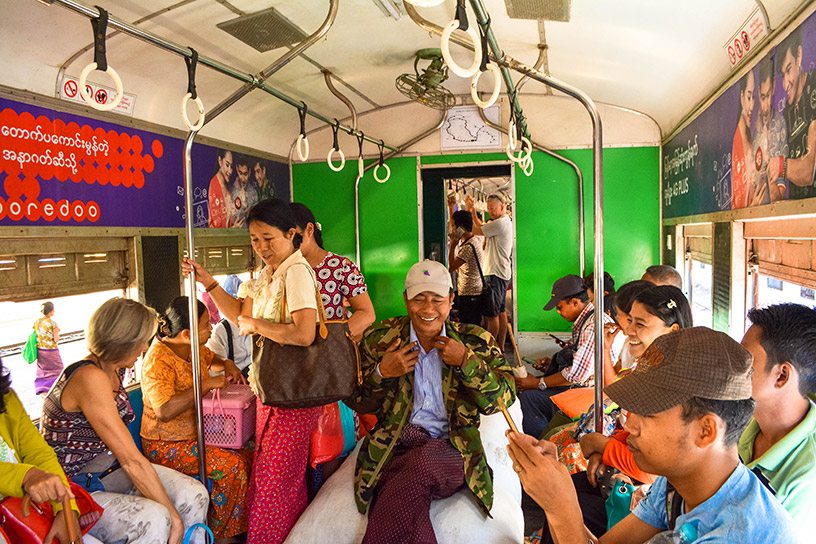
Another activity you can do to observe local life is catch the Pansodan Street commuter ferry to the other side of the Yangon River and land in Dalah.
Things You Should Know:
- It’s now easier than ever to enter Myanmar with the introduction of its e-visa scheme. Many nationalities can now apply online to enter Myanmar at https://evisa.moip.gov.mm Visas are valid for 90 days to enter Myanmar from the date you receive your approval notification. You may receive this within 1-3 days of your application. You simply have to print out this approval confirmation and present it to the Immigration Officer on arrival along with your passport. Check the e-visa website for details on approved entry points. You can stay in Myanmar for 28 days from the date of entry.
- It’s no longer true that it’s hard to withdraw money in Myanmar. There are now ATMs everywhere across Myanmar. The good news is that they accept many foreign cards. Also you don’t have to worry about bringing in pristine US Dollars. Taxi drivers, hotels and ticket booths accepted my crumpled US Dollars that had been sitting in my wallet for months.
- US Dollars will be accepted in many places across Myanmar and many prices will be quoted in US Dollars. US Dollars will be accepted by taxi drivers.
- Cash is best in Myanmar. While some hotels will accept credit card, cash is preferred. A fee of 3% of the amount charged will be added if you use your credit card.
- The Shwedagon Pagoda is open from 4am to 10pm daily. Remember to cover your knees and shoulders (no shorts or singlets) and you’ll need to take your shoes off to enter the pagoda. You can take your shoes with you or leave them at a shoe storage counter.
- You can buy tickets for the Yangon Circle Line on platforms 6/7 at the central train station. This is a commuter train for locals so it’s best to hop on outside peak hour so you have more chance of getting a seat or a doorway view.
Lisa Owen is a pint-sized Australian following her dreams to travel to as many places as she can, and loves to share her photography, travel hacks, hiking adventures, and food discoveries along the way. At last count, she has travelled to more than 40 countries in between working in public relations and discovering hidden gems in Australia's great outdoors. Instagram: @thelittleadventurer Facebook: The Little Adventurer Australia
The views, opinions and positions expressed by the author and those providing comments are theirs alone, and are meant as travel inspiration only. They do not reflect the opinions of Cover-More Insurance. You should always read the PDS available from your travel insurance provider to understand the limits, exclusions and conditions of your policy and to ensure any activities you undertake are covered by your policy.